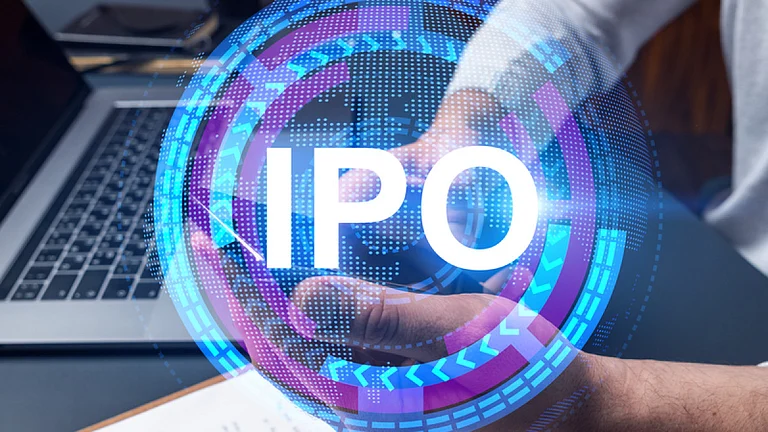Appearances can be deceptive and so can a name. One would expect a pharmaceutical company originating from Pondicherry to be calm and laidback. Aurobindo Pharma has been anything but that and its growth over the last three years seems powered by steroids. The stock is up 13X over the same period and investors continue to bid it up by the day.
After all, nobody is expecting the good times to end anytime soon. And why should they, given that the company is successfully transforming itself from a bulk drugs supplier to a formulations player? The contribution of APIs (active pharmaceutical ingredients) has shrunk from 42% in FY13 to 22% for the latest quarter ending FY15 and along with organic growth, the management is actively chasing inorganic growth, and even there, it seems to be getting maximum bang for its buck.
Consider its latest acquisition of Natrol Inc from Plethico Pharmaceuticals in a US bankruptcy court auction. At first, there was celebration and then followed litigation. According to a report in the Dow Jones Daily Bankruptcy Review, Aurobindo’s US arm accused Plethico of drafting a sham $25 million contract with a fictitious company prior to filing for bankruptcy. The dispute was settled soon after, with Plethico agreeing to pay Aurobindo a settlement of $23.3 million, thereby bringing down the cost of the $132.5 million acquisition.
This much-talked about November 2014 acquisition was part of the generics giant’s efforts to increase its footprint in the US, a market which contributes 50% of its revenue. The transaction gave Aurobindo a hold in the over-the-counter (OTC) segment. “Natrol comes with established nutraceuticals brands and an extensive distribution network consisting of retail pharmacy chains and specialty health food stores to expand market penetration,” said N Govindarajan, managing director, Aurobindo Pharma, while announcing the acquisition. This was the second successive deal for Aurobindo, which had, in April 2014, acquired Actavis Plc’s loss-making operations in seven western European countries to deepen its reach in the European Union (EU).
Along with an extensive distribution network, the Actavis deal added 1,200 products to Aurobindo’s portfolio and is expected to improve EU’s contribution to total revenue from the existing 34%. Sales in the region are expected to grow at 10% annually and, in FY16, the EU is likely to contribute $435 million to the top line. In the case of Natrol, while it may be difficult to drastically improve margins owing to competition in nutraceuticals, the management believes that the key is to improve Natrol’s capacity utilisation, currently running at 30%.
Govindarajan told billionaire investor Rakesh Jhunjhunwala (who holds a 1.03% stake) in the last conference call that along with 15% revenue growth from the Natrol acquisition, he expects higher net profit growth as margin expands from the current 14% to the targeted 20% over the next few years.
Cumulatively, the two deals will bring in $525 million of Aurobindo’s FY15 turnover. These two key acquisitions are intended to help Aurobindo inch closer to becoming a $3 billion company by FY17 from nearly $2 billion in FY15. According to a report by Ranjit Kapadia, analyst, Centrum Broking, on the basis of organic growth (computed with Aurobindo’s product portfolio as well as the projected contributions of Natrol and Actavis in mind), the company will hit $2.7 billion by FY17.
He also thinks that Aurobindo, on a fiery path towards inorganic growth, will acquire more companies by FY17, though, recently, it divested its unprofitable Australian subsidiary to intensify focus on the US and the EU. Even as the contribution of organic to inorganic growth is expected to be 85:15, many analysts feel that Aurobindo should not attempt another acquisition until it breaks even on the Actavis deal.
Perfect cocktail
Going forward, the main growth driver will be the US business, with more approvals coming through in injectables and controlled substances (medicines that consist of narcotic products for use in pain management). Aurobindo will continue to move up the value chain in these product areas, since it already has inherent capabilities here and its filings over the past year or two will provide a revenue stream for the next two years.
The shift from bulk drugs such as SSPs (semi-synthetic penicillin) and cephalosporins (family of bactericidal antibiotics) towards finished drugs offers higher margins to the company — up to 50% in the case of oral drugs — and even higher in the case of injectables. In the US, where the company has outperformed, it has filed 380 ANDAs (applications submitted to the US FDA seeking approvals for generic drugs), of which 195 had received approval as on January 6, 2015.
Robert Cunard, CEO, Aurobindo Pharma USA, is very optimistic about the prospects of the controlled substances business. “We have several bids out right now that will offer considerable upside for us and we have additional products coming in. So, it will be a strong driver for us for this fiscal and the next as well,” he said during the concall.
As for the injectables segment, another key growth driver for the company, Ronald Quadrel, CEO, Auromedics Pharma USA, expects sales to grow at 50% for the next two years, pending regulatory approvals. “Because of the large number of products in the pipeline, the injectables with higher sales potential should get approved towards the end of FY16. So, in FY17, we should see the full benefit of that additional revenue and after that, the injectables space should grow even more between FY18 and FY20,” he said.
The anti-retroviral (drugs used to fight HIV) business is also likely to see more tenders floated in Africa, its biggest market. To further accelerate organic growth, Aurobindo is focusing on complex molecules like peptides (type of proteins used in medicine and biotechnology as well as health supplements and skincare products), a market with an estimated size of $289 billion and an annual growth rate of 11%.
AuroPeptides, a wholly owned subsidiary set up in 2012, develops and manufactures polypeptide bulk drugs, making Aurobindo a vertically integrated firm that produces both bulk and finished drugs. “The company has moved away from being a cephalosporin producer to other higher margin products such as cardiovascular and anti-diabetes drugs and has got good growth from the injectables space,” says Surajit Pal, research analyst, Prabhudas Lilladher Securities.
Past perfect
But is this good enough to sustain growth? And in an overcrowded market with a large number of pharmaceutical players vying for a slice of the same pie, what exactly separates Aurobindo from its peers? Analysts believe that Aurobindo’s key strength lies in anticipating which drugs are going to be the next big thing and then developing them well ahead of the competition. In line with this, the company is developing complex molecules — including four penems (antibiotics) — over the next year, and is also looking at nanospheres (drugs made from nanotechnology) and liposomal products (fatty agents which carry drugs to different parts of the body) to tap the lucrative market. “The addressable market for our four penems is $400 million. The biggest of these is ertapenem, which is worth $200 million and will come off patent in 2017. In this product filing we will have the first-mover advantage,” said Quadrel.
Another advantage is that Aurobindo manufactures nearly 90% of its active ingredients or bulk raw material in-house, as opposed to other players who outsource. “Vertical integration has been a key advantage for Aurobindo, helping it reduce costs, improve efficiency and reduce turnaround time,” says Praful Bohra, vice-president, research, Religare Institutional Equities.
In addition, Aurobindo also boasts a large and differentiated portfolio of drugs. However, its biggest advantage over its competitors is the ability to price drugs lower than its peers and yet get a higher return on sales. This is on account of the fact that it sources its APIs from its units in India, where labour and manufacturing costs are on average 30% cheaper than elsewhere.
Much of the management’s optimism stems from the past years of good growth as, barring FY11, lady luck has largely favoured Aurobindo. FY11 saw regulatory challenges affecting capacity utilisation at its three main plants. It was also a year when the company redeemed its FCCBs, incurring a ₹123 crore loss by paying redemption premium, including withholding tax of ₹320 crore. These issues, along with currency volatility and a slowdown in Europe, saw the company reporting a consolidated loss of ₹123 crore. Not one to lie still, Aurobindo responded by introducing newer products and renewing focus on markets such as Japan, Latin America, Russia and west Asia.
And it worked. If FY11 was a bad year, then FY12 was markedly different. Two of the company’s manufacturing units got US FDA approval and it started selling more directly rather than through partners like Pfizer. The year also saw the company getting several ANDA and DMF approvals. In FY13, the company registered a 27% increase in consolidated revenue with API sales accounting for ₹2,536 crore and formulations accounting for ₹3,387 crore, a 23% and 30% increase, respectively, on a year-on-year basis.
Most importantly, net profit for the year was ₹291 crore, as opposed to a net loss of ₹123 crore in FY11. The company entered new markets and improved its basket of therapeutic products, along with securing several key approvals for injectables and controlled substances, giving it good traction. “For any incremental product launch, 50% of the sales flow shows up as Ebitda margin because there is no fresh investment required at the front end,” says Hitesh Mahida, analyst, Antique Stock Broking.
Good gets better
If FY12 and FY13 saw a revival in fortunes, FY14 was an exceptional year. Aurobindo rationalised costs, improved cash flows to meet capital requirements and increased capacity utilisation. In addition, the company acquired exclusive manufacturing and marketing rights for Cymbalta, an anti-depressant generic, in the US market.
These efforts paid off, as consolidated revenue in FY14 increased to ₹8,100 crore and reported Ebitda was ₹2,155 crore. FY15 saw the company get several approvals in the US and operating loss from the Actavis buyout is expected to come down from €20 million to €10 million. Overall, the company is expected to post sales of ₹12,400 crore and net profit of ₹1,636 crore in FY15, as opposed to ₹8,100 crore and ₹1,314 crore in FY14.
While Aurobindo’s focus on injectables and controlled substances does appear to offer a glimmering future, it remains to be seen whether the optimism is entirely justified. For one, the traction from Cymbalta has faded as market exclusivity has expired. More importantly, analysts believe that the key to sustaining growth will be execution, which depends largely on the management’s bandwidth to scale up the business. In addition, debt has been a legacy issue for Aurobindo, which has only increased due to its string of acquisitions.
“Debt has always been a problem for the company because barring FY14 (thanks to the Cymbalta exclusivity), the company has never generated free cash flows,” says Mahida of Antique. Moreover, the company’s growth is dependent on approvals, so one needs to be wary of any regulatory surprises, and any slowdown due to delays in FDA approvals. With high growth expectations built in, Aurobindo Pharma’s management needs to get its growth formulation right in order to remain the blue-eyed boy of investors and not end up as a bitter pill.






























